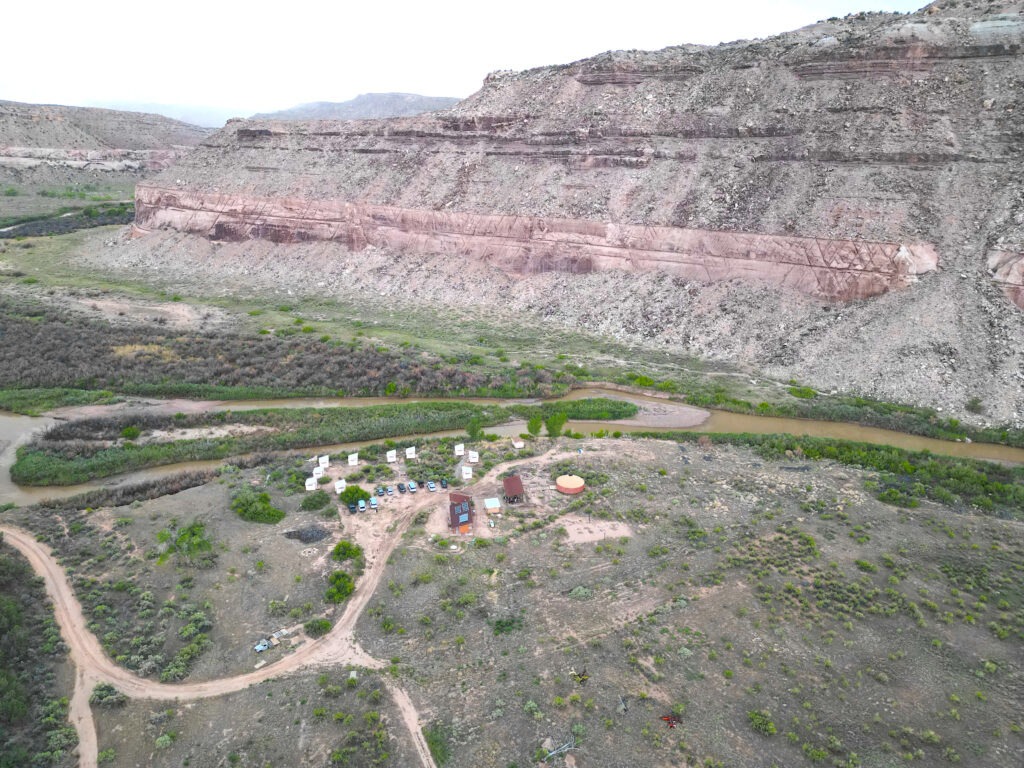Woodrats use ‘quantity over quality’ as a Detox plan
January 9, 2025
Above: A woodrat (N. lepida) between two food staples; juniper (left, ancestral diet) and creosote bush (right, new diet for the species).
Woodrats are one of the only animals that can tolerate large quantities of creosote, a shrub with leaves coated in a chemical cocktail of poisonous resin.

Part of the team doing field work in California to capture wild woodrats.
The critter’s constitution has astounded biologists and represents a decades-long debate—over evolutionary time, how do animals adapt to a deadly diet? Do detoxification enzymes become more specialized or more abundant?
The study, led by University of Utah (U) biologists, is the first to pinpoint the specific genes and enzymes that allow woodrats to eat the near-lethal food without obvious harm. The scientists compared the detoxification pathways of two woodrat species that encountered creosote independently in their evolutionary histories to those who had never encountered creosote. Before creosote invaded parts of the Southwest, woodrat populations had a smaller number of genes that coded for enzymes that process creosote toxins. As creosote grew to dominate the landscape, natural selection drove a detox-gene duplication bonanza, resulting in massive increases in the numbers of genes that produce enzymes that eliminate creosote toxins. Curiously, these enzymes did not become more specialized to detoxify creosote—there was just much more of them.
The authors propose that gene duplication is an important mechanism by which animals initially adapt to new environmental pressures.
“These woodrats have only been exposed to creosote bush for about 15,000 years—in an evolutionary timescale, that’s very little time,” said Dylan Klure, postdoctoral researcher at the U and lead author of the study. “Some other changes may happen in the future, but right now, the duplication innovation is what’s allowed them to become so toxin-resistant so quickly.”
The study published on Jan. 10, 2025, in the journal Science.
There are two primary hypotheses for how animals evolve tolerance to toxic chemicals. The first is that new DNA mutations modify existing detoxification enzymes to metabolize toxins faster and more efficiently—a lower quantity, higher quality approach. The second is that detoxification genes and the enzymes they produce don’t change much, but duplicate in number over evolutionary time, allowing animals to produce more detoxification enzymes in response to toxin consumption—a greater quantity, lower quality approach. Previous research found that herbivorous insects process toxins using specialized enzymes that metabolize chemicals faster. Since the 1970s, biologists have favored this “enzyme quality over quantity” hypothesis. This study found the exact opposite.
“We discovered that creosote-feeding woodrats don’t have specialized enzymes to metabolize creosote toxins, just more—many more, and from a wide variety of existing detox enzymes,” said Denise Dearing, U biologist and senior author of the study. “These duplications of existing genes increase the quantity of detoxification enzymes produced, enabling more toxin to be eliminated.”
Read the full article by Lisa Potter in @TheU
Read the story as featured on NSF Stories.





